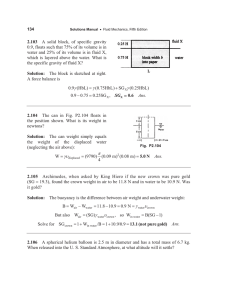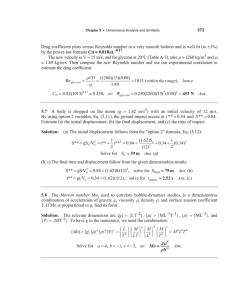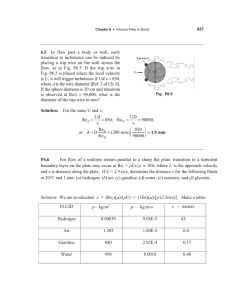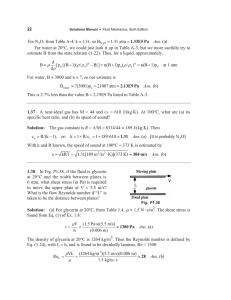S
advertisement
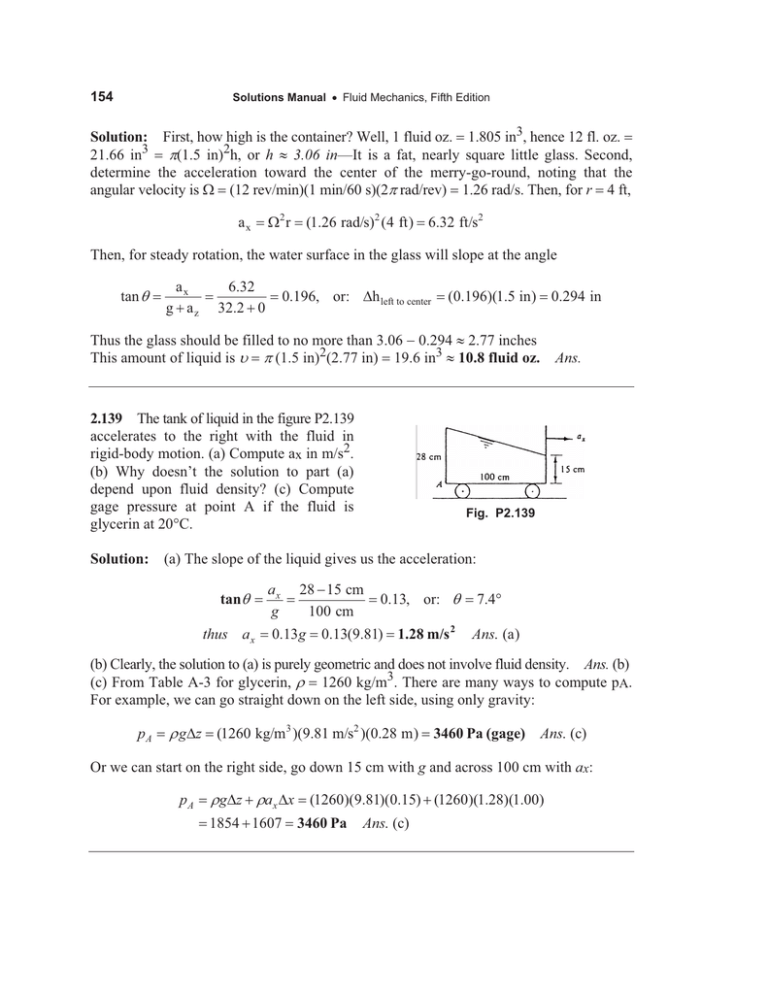
154 Solutions Manual x Fluid Mechanics, Fifth Edition Solution: First, how high is the container? Well, 1 fluid oz. 1.805 in3, hence 12 fl. oz. 21.66 in3 S(1.5 in)2h, or h | 3.06 in—It is a fat, nearly square little glass. Second, determine the acceleration toward the center of the merry-go-round, noting that the angular velocity is : (12 rev/min)(1 min/60 s)(2S rad/rev) 1.26 rad/s. Then, for r 4 ft, ax :2 r (1.26 rad/s)2 (4 ft) 6.32 ft/s2 Then, for steady rotation, the water surface in the glass will slope at the angle tan T ax g az 6.32 32.2 0 0.196, or: 'h left to center (0.196)(1.5 in) 0.294 in Thus the glass should be filled to no more than 3.06 0.294 | 2.77 inches This amount of liquid is X S (1.5 in)2(2.77 in) 19.6 in3 | 10.8 fluid oz. 2.139 The tank of liquid in the figure P2.139 accelerates to the right with the fluid in rigid-body motion. (a) Compute ax in m/s2. (b) Why doesn’t the solution to part (a) depend upon fluid density? (c) Compute gage pressure at point A if the fluid is glycerin at 20qC. Ans. Fig. P2.139 Solution: (a) The slope of the liquid gives us the acceleration: tanT thus a x ax g 28 15 cm 100 cm 0.13g 0.13, or: T 0.13(9.81) 1.28 m/s 2 7.4q Ans. (a) (b) Clearly, the solution to (a) is purely geometric and does not involve fluid density. Ans. (b) (c) From Table A-3 for glycerin, U 1260 kg/m3. There are many ways to compute pA. For example, we can go straight down on the left side, using only gravity: pA U g'z (1260 kg/m 3 )(9.81 m/s2 )(0.28 m) 3460 Pa (gage) Ans. (c) Or we can start on the right side, go down 15 cm with g and across 100 cm with ax: pA Ug'z Ua x 'x (1260)(9.81)(0.15) (1260)(1.28)(1.00) 1854 1607 3460 Pa Ans. (c)
